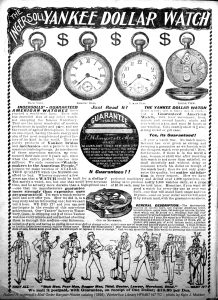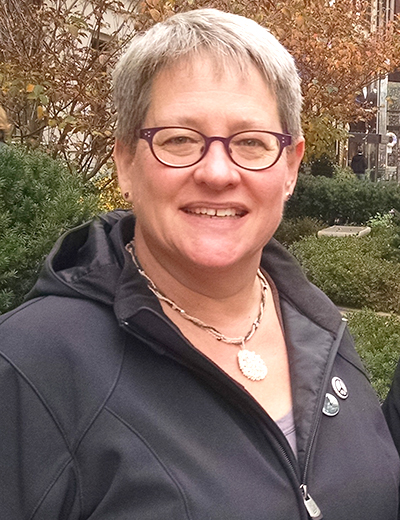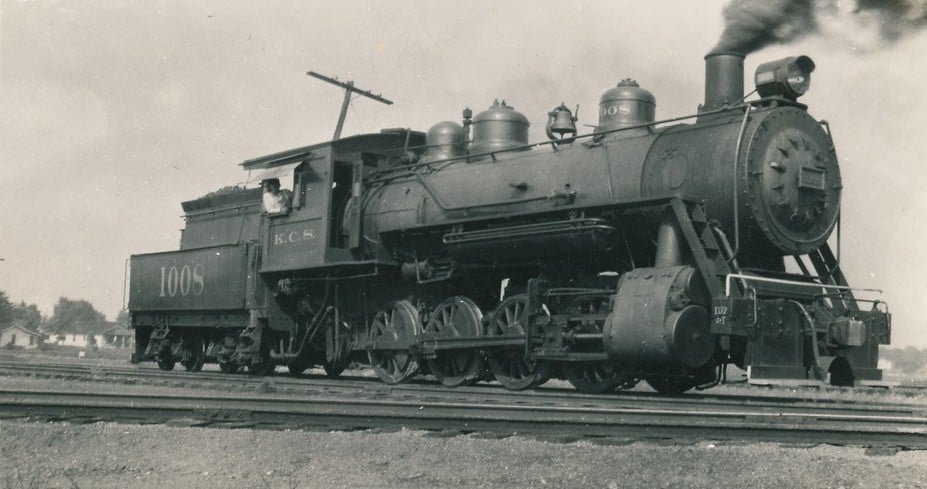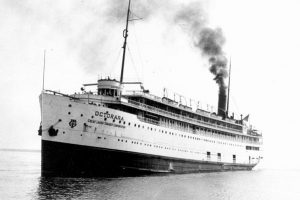When the money Fred had earned on the tanker Gulf King ran out, he started hanging around the hiring hall in Port Arthur, Texas, to find another ship that was sailing to someplace more exotic than Jacksonville, Florida. In the spring of 1923, however, jobs on board the Texas and Gulf Oil Companies’ ships were scarce. Fred met another out-of-work seamen named Jim who was headed back home to Denver. This piqued Fred’s interest, since Fred was born in Colorado, so he decided to tag along. Jim explained that with no money, the way to go was to hitch a ride on a freight train.
Later that day, Fred, Jim, and several other unemployed sailors hopped a slow-moving Kansas City Southern Railroad train. The Kansas City Southern ran from its namesake city south to Port Arthur. Jim chose a tank car so that the novices could grab the shoulder-high railings for safety when the train rolled around a curve. They all sat on one side of the platform that held the tank. The trick, said Jim, was to avoid the brakeman who could throw them off the train. They took turns watching for the lantern the brakeman carried. If they saw him coming down the train, they would all move to the opposite side of the car.
As they made their way from the Kansas City Southern hub of Shreveport, Louisiana, through Oklahoma, Jim’s trainees practiced walking along the sides of the tank cars and crossing over the gap to the next car. They even learned the finer points of traveling the tops of boxcars: if the train was moving slowly, they could walk along the top; if it was moving fast, they had to crawl. Fred wrote that the scariest part was leaping the few feet from one car to the next as the train pitched from side to side.
They even learned the finer points of traveling the tops of boxcars: if the train was moving slowly, they could walk along the top; if it was moving fast, they had to crawl.
Somewhere in Missouri, Fred and his friends were caught by a railroad detective who threatened to shoot them if he ever saw them again. They decided to heed his warning and used their feet to get to to Dodson, Missouri. This was where the Kansas City Southern connected to the Missouri Pacific Railroad, which would carry them west to Colorado. When they arrived in Pueblo, they presumably lost their mentor, Jim, whose goal it was to return to Denver. Fred writes that his own welcome home to Colorado was not at all what he had envisioned. Outside Pueblo, he mowed someone’s lawn to earn something to eat and was then chased and bitten by a dog.
 It seems the young men had learned how to avoid trouble and grievous injury. They made their way back east, rolling through Illinois and then Indiana to arrive unscathed in Cleveland. Fred leveraged his Lindy’s work experience and got another dishwashing job. He stuck with it for three weeks – just long enough to get some pocket money. The slow progress of the freight trains was frustrating Fred’s effort to get back to New York to resume his sea career, so he chose to “ride the roof” of a scheduled, fast-moving passenger train from Cleveland to Buffalo. He chose one that departed about dusk and used his one-dollar Ingersoll watch to time his boarding of the correct train.
It seems the young men had learned how to avoid trouble and grievous injury. They made their way back east, rolling through Illinois and then Indiana to arrive unscathed in Cleveland. Fred leveraged his Lindy’s work experience and got another dishwashing job. He stuck with it for three weeks – just long enough to get some pocket money. The slow progress of the freight trains was frustrating Fred’s effort to get back to New York to resume his sea career, so he chose to “ride the roof” of a scheduled, fast-moving passenger train from Cleveland to Buffalo. He chose one that departed about dusk and used his one-dollar Ingersoll watch to time his boarding of the correct train.
Once aboard the coal tender, Fred worked his way to the baggage car, climbed to the top of it, and fastened his belt around whatever railing or vent he could find. The sound of the whistle at crossings was deafening and cinders from the engine’s stack got into his eyes and hair. He wrote, “now and then the fireman would open the fire box door and shovel coal into the hungry engine. This operation would light up the sky!” This was how Fred passed a long night to Buffalo.
Imagine how grimy Fred was come morning! When he disembarked, as the sun was just rising, he saw a light in the window of a house very close to the tracks. He decided to take a chance that someone would allow him to wash up. An elderly black woman answered the door and invited him in without hesitation. The light he had seen was a kerosene lamp. Fred carried his own bar of soap and a small towel, but the kind lady put those items out for him to use, along with a basin of hot water. Fred remembered that when he thanked her, she said, “You are very welcome, son, and do take care of yourself.”
The old woman’s kindness was the start of more good luck for Fred. As he wandered clean and confident through town, he “spied the masts of a ship and headed for that beacon.” By the end of the day, he had a job as a deck hand on the Great Lakes steamer Octorara. The week-long round-trip route was Buffalo-Cleveland-Detroit-Sault St. Marie-Duluth-Buffalo. The Octorara was like a miniature luxury ocean liner that could carry 594 passengers. Amenities included a daily newspaper, a library, a soda fountain, a barber shop, shore excursions, dances, and bridge tournaments.
Coincidentally, the culmination of Fred’s forty-year career at sea would be as captain of the full-size 880-passenger American Export ocean liner Atlantic.
To be continued.
Share this:

About Sharon Inglis
In nearly 30 years in the educational publishing industry, Sharon developed and directed the production of French, Spanish, Italian, German, social studies, science, and math textbook programs for secondary school and higher education. She is very happy to be at NEHGS and applying her editorial and project management skills to Newbury Street Press publications, theMayflower Descendant journal, and whatever else comes her way!View all posts by Sharon Inglis →

